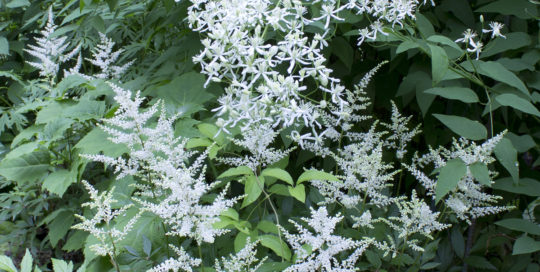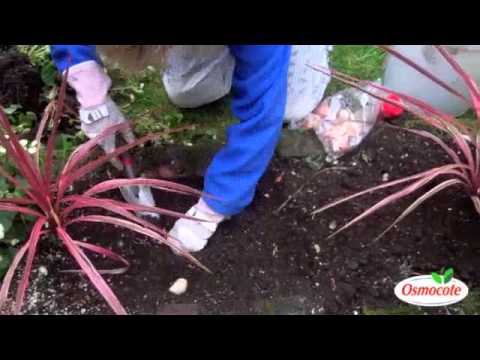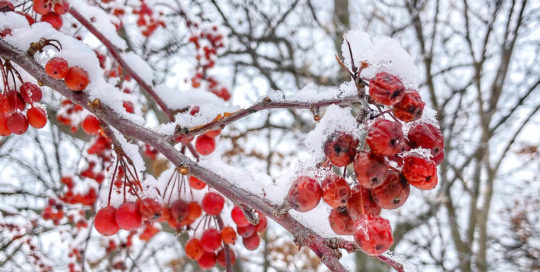After a long summer spent toiling in our gardens under the hot sun, it’s tempting to welcome the cooler days of fall by hanging up our trowel and gloves, reeling in the hose, and taking a break from all the weeding, watering, and pruning that are such an important part of our warm weather routine. Still, spending a little extra time now to prepare perennial beds for winter will pay off come spring. A few easy steps are all it takes to make sure you’ll start the new growing season off right. Start with a disease-free garden and plants that are ready to burst forth in color.
How to Divide Perennials
If you are planning to move or divide any of your spring and summer blooming perennials, fall is a good time to do this. The excessive heat of the summer months can be stressful on plants and makes adapting to changes more difficult. Starting at least six weeks before the ground freezes, dig up and divide perennials that have grown too large or have developed bare spots in the center. Dividing now will control the plant’s size and reinvigorate blooming next year. Place new plants in the ground in early fall. It will give them time to become established and “harden off” before the arrival of freezing weather.
Saving Bulbs
If you have tender bulbs such gladiolus, dahlia, or canna, dig them up now and store in a warm, dry place to prevent them from being killed off by cold winter temperatures. Wait until after their leaves start to shrivel and turn brown. Cut the tops off a few inches above the ground – you can use these tops as a makeshift handle. Using your spade, gently loosen the soil from around the bulbs. Be careful not to nick or slice them, and gently lift out of the ground. Lay the bulbs out to dry for several weeks on paper or a raised screen in the basement or garage, out of direct sunlight and freezing temperatures. Then label the bulbs and store for winter in containers layered with peat moss, shredded newspaper, sand, or sawdust.
Important of Water in the Fall
Continue to water perennial beds on a weekly basis throughout the fall and right up until the ground freezes. This will help ensure you have plants with a strong, healthy root system. In spring, plants will rely on this root system to get them off to a good start. Watering deeply – at least an inch per week between periods of rainfall – is more conducive to optimal root health than shallow watering. This way encourages roots to reach deep into the soil for hydration. If it is a dry autumn season, special attention should be paid to evergreens, particularly the broadleaf varieties like boxwoods, as they continue to lose water from their leaves throughout the winter, making them highly vulnerable to winter burn. Avoid using a high nitrogen fertilizer with perennial plants in late summer or early fall. It will drive above-ground growth that may not be adequately established to survive the first winter freeze. On the other hand, a slow-release fertilizer with lots of phosphorus and potassium is suggested as it will encourage root growth.
Remove Dead Plant Material
Weeding is another task that (unfortunately!) becomes no less important just because the mercury starts to dip. Going through perennial beds to remove weeds before winter sets in is important. It will prevent insects and diseases from hiding out and overwintering in the garden. Remove any dead material or plant debris that has collected in flowerbeds as well. Additionally, beginning with a tidy, weed-free landscape always feels like a welcome head start on the growing season. In March and April, it’s time to grab the Wellies and start mucking about in the outdoors again. Future-you won’t have to worry! It’s the equivalent of finishing all your homework the night before. It always feels good to be prepared!
The Advantage of Pruning Aggressively
Cutting your plants down to the ground before winter is another beneficial practice. Since they will grow back in spring from their root system, most perennial stalks and stems can be safely trimmed to just above the soil level as plants enter their period of winter dormancy. This is one more task that when completed will make for lighter work as the weather warms next spring. Feel free to allow for some exceptions though. Leaving a few perennials standing can add winter interest to the landscape and seed heads will provide food for birds. Just remember to cut these plants back before the new growth starts to come up next year.
Don’t Forget the Mulch
Add mulch – pine needles, wood chips, chopped leaves or other organic matter – to your perennial beds once temperatures become steadily cooler and the ground is starting to freeze. Mulching will provide a protective layer of insulation to the soil throughout the winter months and prevent damage to roots from the freezing and thawing cycles of late winter and early spring. Spread the mulch two to three inches on the ground around plants, but take care to avoid covering them up completely or piling it on too thickly, which can result in a wet environment, fungus problems, and rotting plants.
Cover Vulnerable Plants
Some of my favorite shrubs just aren’t quite hardy enough to withstand our Midwestern winters without a little help. This knowledge comes from harsh lessons learned with certain varieties of roses and hydrangeas. These plants can be wrapped or covered for winter protection. Once temperatures are consistently cold, wrap the plants in burlap or landscape fabric. Another easy trick is to install a chicken wire “cage” around them, then fill it in with leaves raked up from your yard. Just make sure to remove any coverings in the event of unseasonably warm days, as you don’t want plants to become overheated.
Now It’s Time to Relax with a Cuppa
And now you can relax! Spend the next few months curled up with your seed catalogs, placing orders and making plans. By taking the time in autumn to prepare your garden for the bitter winds and cold months ahead you’ll be all set when the warmer days of early spring finally do roll around and it’s time to dig out our gloves and get out there again.









